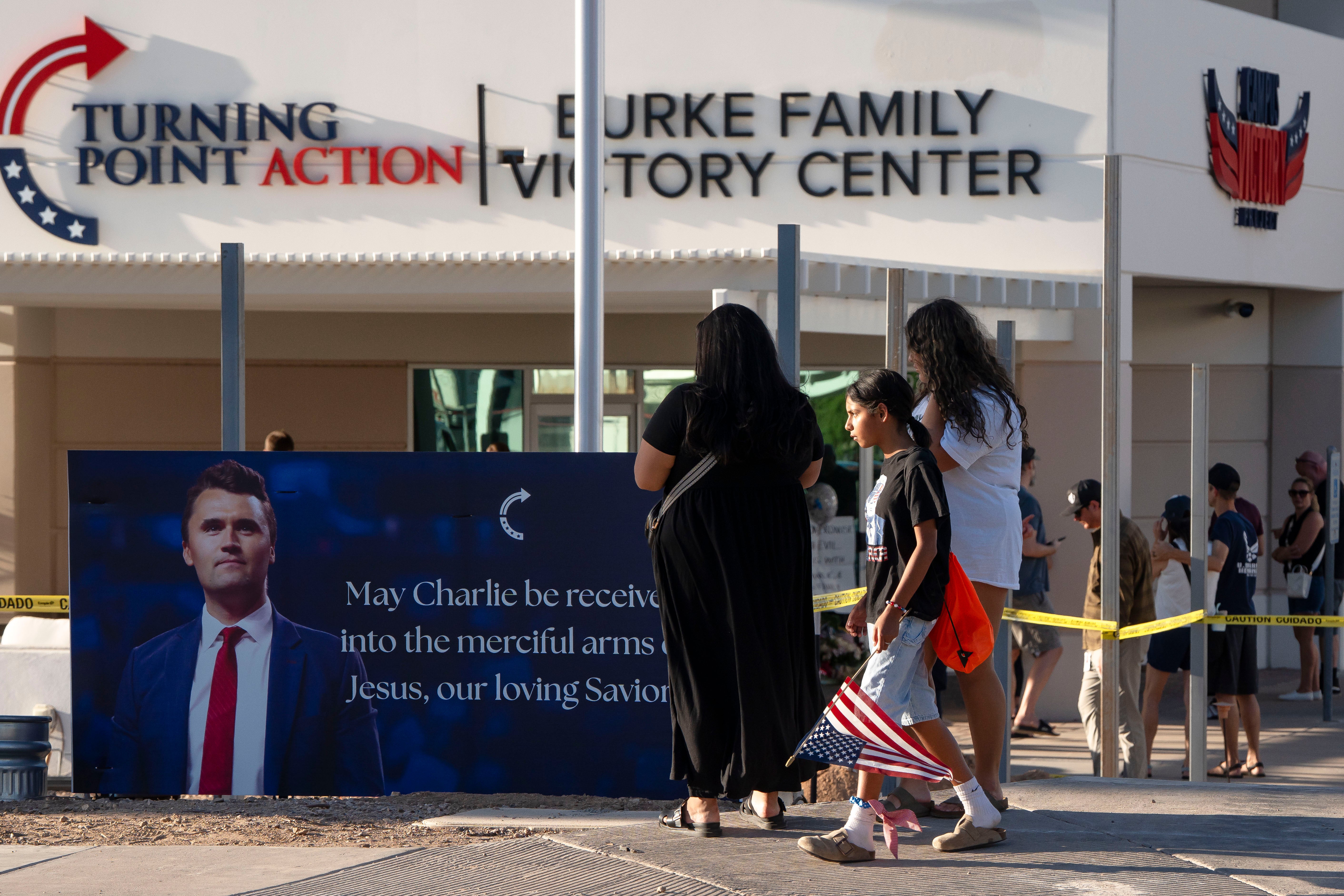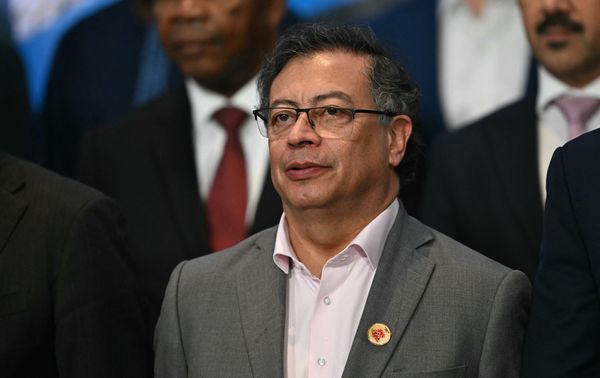Just minutes after Charlie Kirk had been shot in Utah, video of his death was not only easy to find, but for many, unavoidable to watch.
Footage of the shooting was immediately posted to platforms including X, formerly known as Twitter, and Meta’s Instagram. And because of the feed-based nature of these platforms – where users do not pick what they see next – many were forced to watch a disturbing video without either warning or choice.
Traditional news organisations were cautious in their mid-afternoon coverage of Kirk’s assassination on Wednesday: they chose not to depict the moment he was shot, instead showing video of him tossing hats to his audience moments before, and panicked onlookers scattering wildly in the moments after.
In practical terms, though, it mattered little. Explicit footage of the shooting was available almost instantly online, from several angles, even in slow motion. Millions of people watched.
The footage was easy to find on X, Facebook, TikTok, Instagram, YouTube – even on Truth Social, where US president Donald Trump posted official word of the conservative activist’s death.
These platforms aim to keep readers engaged with a constant flow of new content, ostensibly tailored to their interests but ultimately not giving them a choice about seeing any given post. In addition, videos will autoplay as users scroll – meaning that people were shown graphic and brutal footage without a chance to prepare themselves.
On X, a number of posts seemed to reference directly the impossibility of avoiding the video. In the wake of the attack, numerous people posted that they were logging off – really the only way to avoid seeing the footage.
Kirk was shot at a public event, in front of hundreds of people at a Utah college campus, many of them holding up phones to record a celebrity in their midst, and savvy about how to disseminate video evidence of a news event. The activist’s fame was a direct result of the widespread coverage of the kind of debate he was participating in at the time of his death – often engaging young people on college campuses – with footage of these events proving highly popular on social media platforms that thrive on often very oppositional discussions.

On X, there was a video showing a direct view of Kirk being shot, his body recoiling, and blood gushing from the wound.
Another video consisted of a loop showing the moment of impact in slow motion, stopping before blood is seen. Another, taken from Kirk’s left, included audio of Kirk talking about gun violence at the moment he was shot.
For more than 150 years, news organisations such as newspapers and television networks have been accustomed to “gatekeeping” when it comes to explicit content – making editorial decisions around violent events, controlling what images and words appear on their platforms for their readers or viewers to see.
But in the fragmented era of social media, smartphones, and instant video uploads, these editorial decisions made by legacy media have less of an impact than ever.
Images spread across the country

Across the country in Ithaca, New York, college professor Sarah Kreps’s teenage sons texted her about Kirk’s assassination shortly after school was dismissed and they could access their phones.
No, she told them. He had been shot, but there were no reports that he had died. Her son answered: “Have you seen the video? There’s no way he could have survived that.”
The videos were posted and reposted at lightning speed. One person on X urged people to “stop the violence”, but included a clip of the shooting.
Some took to social media to plead with other users not to spread the images. “For the love of God and Charlie’s family,” read one message, “just stop.”
YouTube said it was removing “some graphic content” relating to the event, and restricting videos so they could not be seen by users under the age of 18 or those who were not signed in.
“Our hearts are with Charlie Kirk’s family following his tragic death,” YouTube said. “We are closely monitoring our platform and prominently elevating news content on the homepage, in search and in recommendations to help people stay informed.”
Meta’s rules don’t prohibit people from posting content such as videos of Kirk’s shooting, but warning labels are applied, and these posts are not shown to users who say they are under 18.
The parent company of Instagram, Facebook and Threads referred one reporter to the company’s policies on violent and graphic content, which they indicated would apply in this case – but made no further comment. An X representative did not immediately return a request for comment.
It’s an issue social media companies have dealt with before, in equally gruesome circumstances. Facebook was forced to contend with people wanting to livestream violence following a mass shooting in New Zealand in 2019, said Cornell University’s Kreps, who is the author of the forthcoming book Harnessing Disruption: Building the Tech Future Without Breaking Society.
Getting to the other side

Some images seeped out onto more traditional media platforms. TMZ posted a video of the incident in which a shot and a voice saying, “Oh my God” could be heard, but Kirk’s upper body was blurred out. A similar video with a blurred image of Kirk was posted on the New York Post’s website.
In such an atmosphere, the care shown by most traditional news outlets may seem quaint or old-fashioned. But news industry leaders are acutely aware of protecting people from graphic images when they are not expecting it; members of the public often have to search for and click on an image if they want to see it – if it hasn’t already been sent to them personally or via a group chat.
It can also send an important message when news outlets are cautious in what they show, Kreps said. “The traditional media can amplify and validate behaviour,” she explained. “It can be a signal for how things should be stigmatised, rather than validated or normalised.”
But on the day of the shooting, in a politically polarised country, the easy availability of shocking images ran the risk of making society’s wound even more painful.
“I don’t see many signs of how we get – as a people, as a nation – to the other side of this,” said CNN’s David Chalian. “I think we are broken, and potentially beyond repair.”
Additional reporting by agencies







